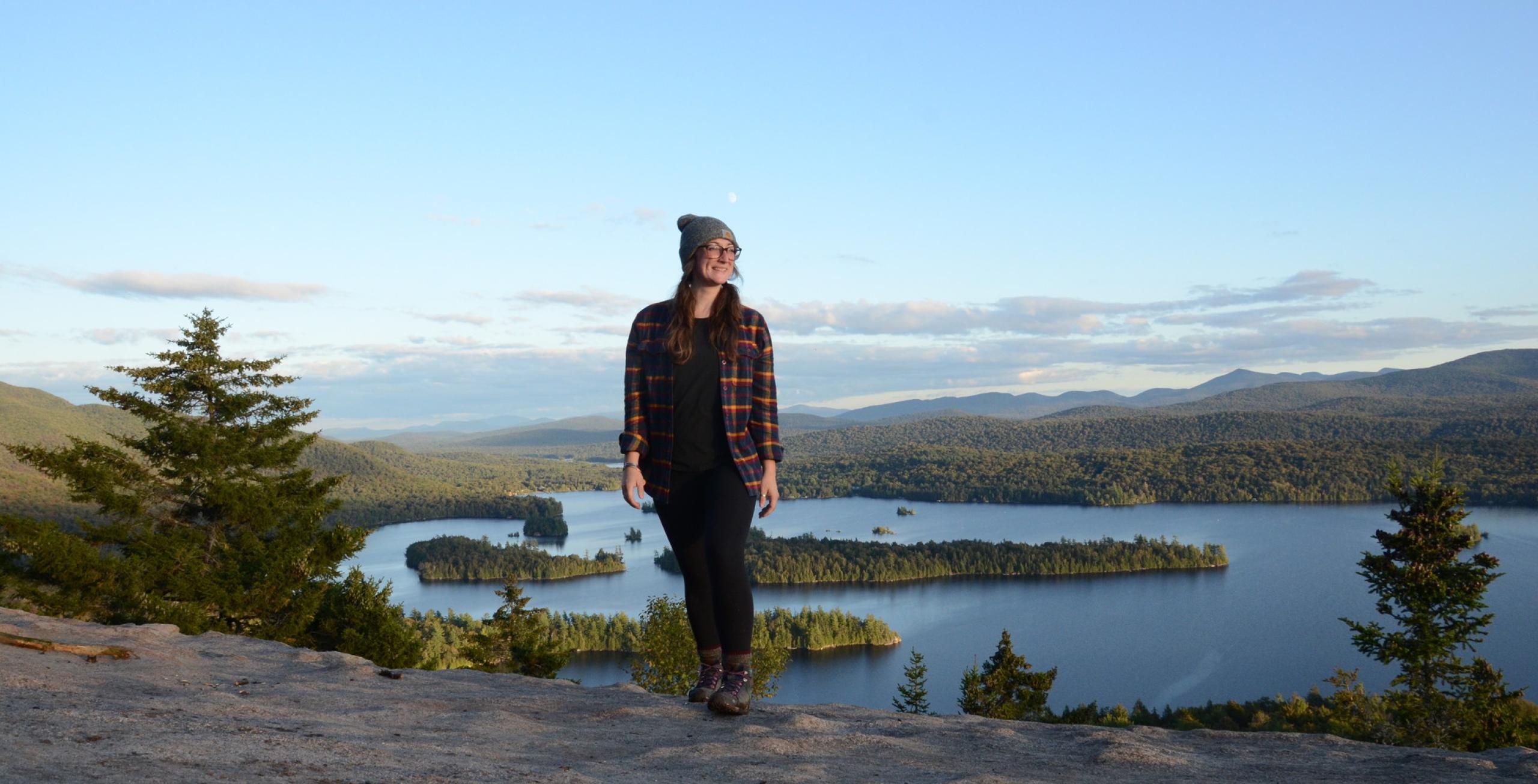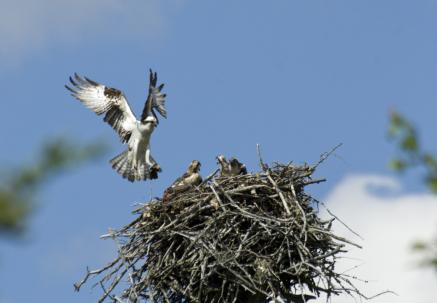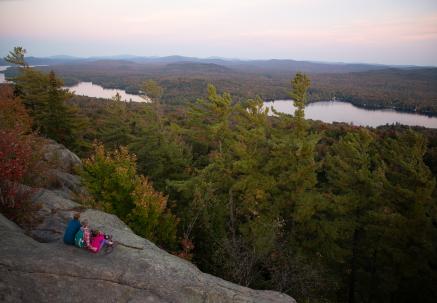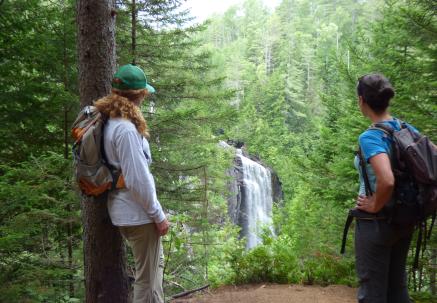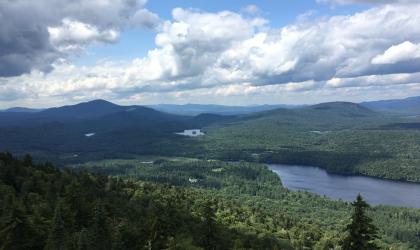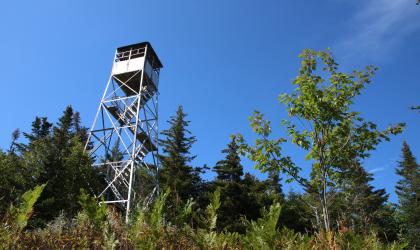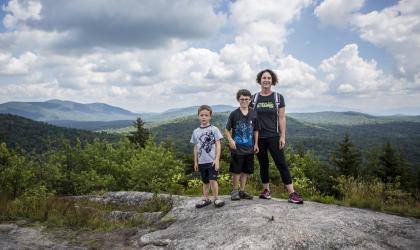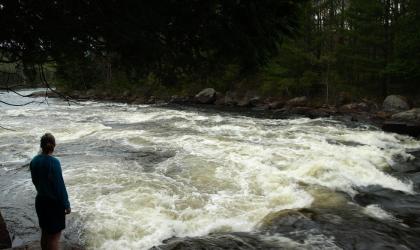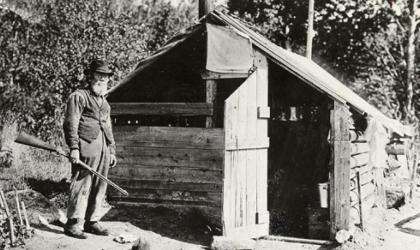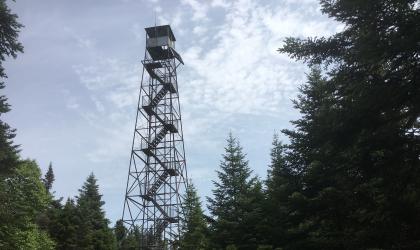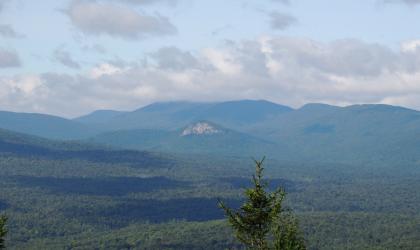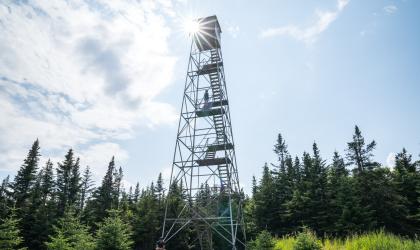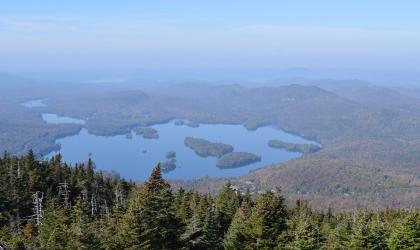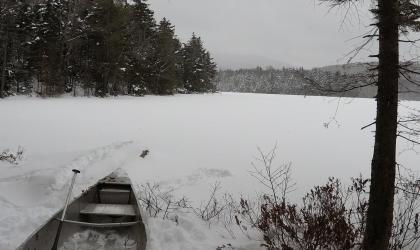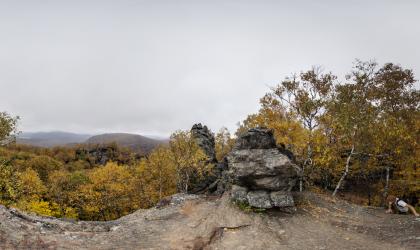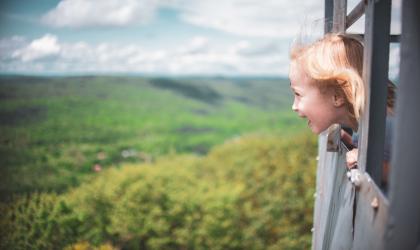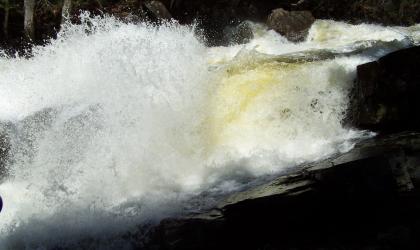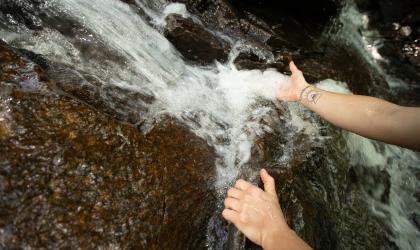Boots on the ground, hearts in the mountains
There are endless hiking options available for finding adventure and solitude in the Adirondacks, where a lot of the land is publicly owned and available for recreation. It's a place where hiking trails crisscross the landscape and outdoor opportunities for any age and skill level abound. That means there's also variety — trips ranging in length from under an hour to several days can all be found here. We have short walks in the woods (many to waterfalls) as well as more challenging terrain (like some of the fire tower hikes) for those who are ready to tackle the bigger mountains and trips.
Unsure where to go? Let a licensed New York state guide show you the way! For trip ideas, see which hikes the NYS Department of Environmental Conservation recommends: Hikes outside of the High Peaks (ou en Francais).
Leave No Trace and Love Your ADK
The magic of the Adirondacks is the result of previous generations taking a long view and protecting the mountains, lakes, and rivers within the Blue Line. That tradition continues today as we support and encourage everyone to practice Leave No Trace ethics, which help protect the lands and waters of the Adirondacks. Before heading out, be sure to review the Leave No Trace principles and make sure you are prepared with hiking essentials!
Preparation is important in any season, but specially so in colder months. In winter, it is especially important to come prepared and practice ways to Love Your ADK; the best way to avoid emergencies is to properly plan and prepare for your trip.
If you're interested in keeping our trails in great condition, consider donating to the Hamilton County Trail Improvement Fund! This partnership with the DEC is an opportunity to improve access to some of our favorite local trails.

